Adding Art to your Homeschool: The Best Crafts for Kids
Homeschooling is more than just academics; it's about creating a rich, engaging environment where children can thrive. One of the most exciting ways to enrich your homeschool experience is by incorporating art into your daily routine. Imagine your living room transformed into a vibrant art studio, filled with colors, creativity, and the joyful sounds of children expressing themselves through various crafts. This article explores a treasure trove of crafts that not only enhance learning but also foster artistic expression in kids. From painting to sculpting, these activities will keep your little ones engaged and excited about their education.
Art isn't just about making pretty pictures; it's a powerful tool in education. When children engage in artistic activities, they develop critical thinking skills and unleash their creativity. Think of art as a workout for the brain! It encourages kids to think outside the box, solve problems, and express their thoughts and feelings. Studies have shown that children who participate in art programs are more likely to excel in school. They learn to communicate effectively, collaborate with others, and build confidence in their abilities. In essence, art becomes a bridge that connects various subjects, enhancing cognitive skills and emotional development during those crucial formative years.
To create a thriving art environment, having the right supplies is essential. You wouldn't cook a gourmet meal without the right kitchen tools, right? Similarly, equipping your homeschool with quality art materials can inspire creativity and make projects enjoyable. Here’s a quick list of must-have art supplies:
- Crayons and Markers: Perfect for doodling and coloring.
- Watercolors: Great for introducing kids to painting.
- Construction Paper: A versatile base for countless projects.
- Glue and Scissors: Essential for crafting and assembling.
- Natural Materials: Leaves, stones, and twigs can enhance creativity.
By having these materials on hand, you’ll be ready for spontaneous artistic adventures that can occur at any moment!
Young children thrive on hands-on activities that stimulate their senses and imagination. Simple crafts can be the perfect way to develop fine motor skills while having fun. For instance, creating a paper plate mask can be a delightful project. Kids can cut, paint, and decorate their masks, which not only encourages creativity but also helps them practice their cutting skills. Another fun idea is making nature collages using leaves and flowers collected from a walk in the park. These projects are not just enjoyable; they also provide an opportunity for kids to learn about colors, shapes, and textures.
What better way to celebrate the seasons than through festive crafts? Each holiday presents a unique opportunity to engage children in cultural traditions while promoting creativity. For example, during Halloween, kids can make pumpkin decorations using orange paper and black markers. Around Christmas, they can create handmade ornaments to hang on the tree. These activities not only make holidays more special but also help children understand the significance behind various celebrations.
Nature is the ultimate inspiration for art! Encouraging children to explore their environment can lead to some fantastic art projects. Imagine a day spent collecting leaves, rocks, and flowers, followed by an afternoon of creativity. You can guide your kids in making leaf prints or using twigs to create miniature sculptures. These projects help foster a connection between art and the outdoors, teaching children to appreciate the beauty of nature while expressing themselves artistically.
As children grow, their artistic abilities can develop further with more advanced techniques. Introducing older kids to methods like watercolor washes, charcoal drawing, or even digital art can be incredibly rewarding. These techniques challenge their skills and encourage them to experiment with different styles. Think of it as giving them the tools to build their own artistic voice, allowing them to express their unique perspectives on the world.
In today's digital age, technology can play a significant role in art education. There are numerous apps and software available that allow children to create stunning digital artwork. Programs like Procreate or Adobe Fresco can introduce kids to digital painting and illustration, opening up a whole new world of creativity. By integrating technology into art projects, children can explore innovative ways to express themselves, merging traditional techniques with modern tools.
One of the most rewarding aspects of creating art is sharing it with others. When children display their creations, it boosts their confidence and self-esteem. Consider setting up a mini art gallery at home where they can showcase their work. You can also take pictures of their artwork and create a digital portfolio. Sharing their art with family and friends can be a wonderful way to celebrate their achievements and inspire them to keep creating.
1. How can I encourage my child to be more creative?
Encouraging creativity can be as simple as providing them with various materials and giving them the freedom to explore. Let them experiment without the pressure of perfection!
2. What if my child doesn't like traditional art forms?
That's perfectly okay! Explore different mediums like digital art, photography, or even performance art. The key is to find what resonates with them.
3. How often should we incorporate art into our homeschooling schedule?
Aim for at least a couple of art sessions each week, but feel free to be flexible. If an idea sparks excitement, go with it!
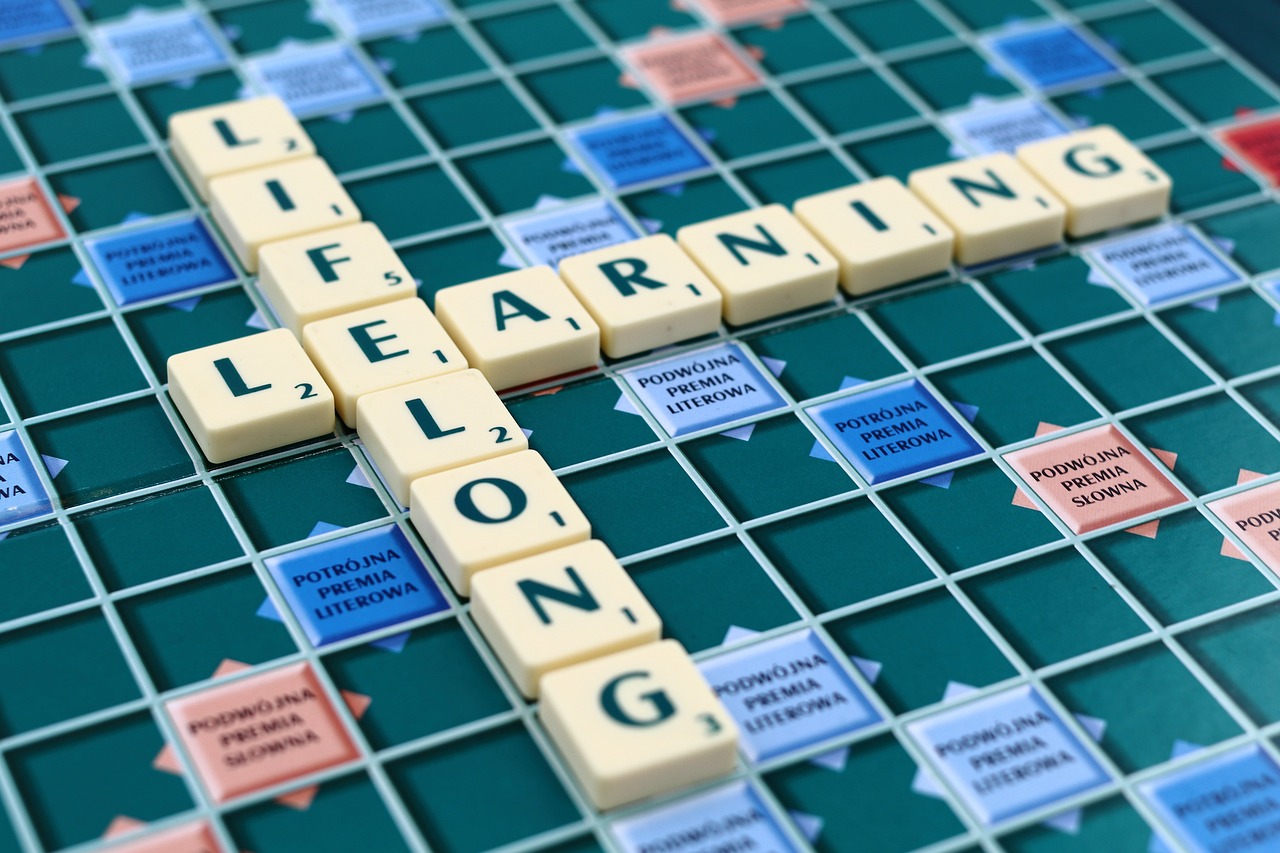
Benefits of Art in Education
Incorporating art into education is not just about filling a classroom with paints and brushes; it’s about unlocking a world of possibilities for children. Imagine a place where creativity flourishes, where children are not just passive recipients of information but active participants in their learning journey. Art promotes critical thinking and nurtures creativity, allowing kids to express their thoughts and feelings in unique ways. This is particularly important during their formative years when their brains are like sponges, absorbing information and experiences.
Research has shown that engaging in artistic activities can enhance cognitive skills significantly. For instance, when children create art, they learn to make decisions, solve problems, and think critically. They explore different materials and techniques, which fosters a sense of experimentation and innovation. This process of exploration is akin to a scientist in a lab, testing hypotheses and discovering new outcomes. Furthermore, art encourages emotional development; through creative expression, children can communicate their feelings and experiences, which is essential for their social and emotional well-being.
Additionally, art education can have a profound impact on academic performance. Studies suggest that children who participate in arts education tend to perform better in subjects like math and reading. Why? Because art teaches them to visualize concepts, think abstractly, and develop a keen eye for detail. It’s like giving them a new pair of glasses through which they can view the world differently. Not to mention, the confidence gained from creating something beautiful can spill over into other areas of their lives, encouraging them to tackle challenges head-on.
Moreover, art can serve as a bridge connecting various subjects. For example, a project that involves creating a mural can incorporate elements of history, math (for measuring), and science (for understanding colors and materials). This interdisciplinary approach not only makes learning more engaging but also helps children see the connections between different fields of knowledge. In essence, art is not just an isolated subject; it is an integral part of a well-rounded education.
To summarize, the benefits of art in education are vast and varied:
- Enhances cognitive skills through critical thinking and problem-solving.
- Promotes emotional development by allowing self-expression.
- Improves academic performance across various subjects.
- Encourages interdisciplinary learning by connecting art with other subjects.
In conclusion, integrating art into education is not merely an add-on; it’s a vital component that enriches the learning experience. By fostering creativity and critical thinking, we prepare children not just to excel in school, but to thrive in life.
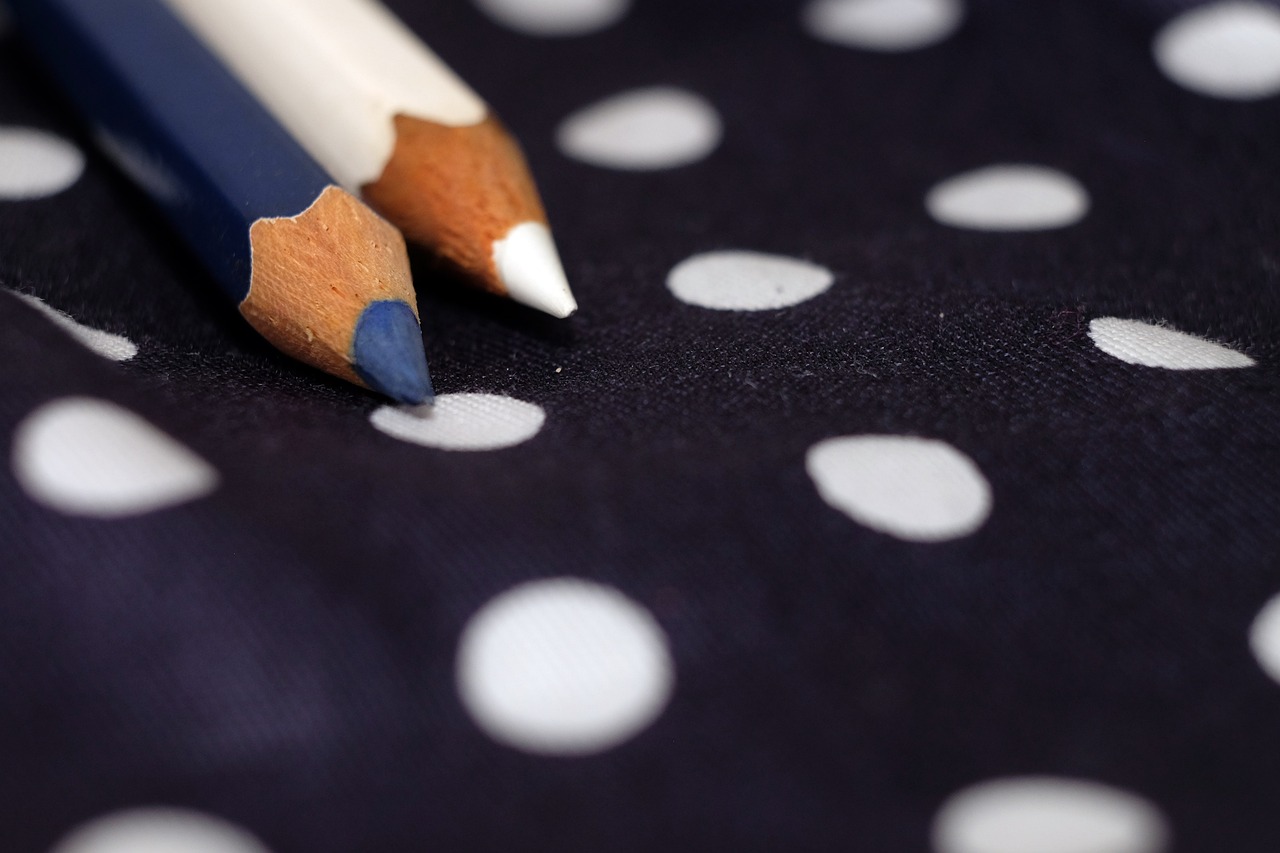
Essential Art Supplies for Homeschooling
When it comes to homeschooling, having the right tools can make all the difference in creating a vibrant and engaging learning environment. Art supplies are not just materials; they are the **gateway** to creativity and self-expression for your children. Imagine a world where colors burst forth from the imagination, where shapes and textures come alive! This is what the right art supplies can do. So, what should you have in your arsenal? Let’s break it down.
First and foremost, every homeschooling setup should include a range of drawing and coloring tools. Think about crayons, colored pencils, markers, and pastels. These items are essential for sparking creativity in young minds. They allow children to experiment with colors, develop their fine motor skills, and express their feelings on paper. A simple box of crayons can be transformed into a tool for storytelling, where each color represents a different emotion or character. Don’t forget to include sketch pads or drawing paper, as they provide a blank canvas for limitless possibilities!
Next up, let’s talk about painting supplies. Watercolors, acrylics, and tempera paints are fantastic for introducing kids to the world of color mixing and brush techniques. A set of quality brushes in various sizes will allow them to explore different styles, from broad strokes to intricate details. Providing a palette for mixing colors can also enhance their understanding of color theory. Imagine the joy on their faces when they see a new shade emerge from their brush!
Another essential category is crafting materials. This includes items like glue, scissors, construction paper, and a variety of embellishments such as stickers, beads, and ribbons. These supplies can inspire countless projects, from collages to 3D models. For instance, using recycled materials can teach kids about sustainability while encouraging them to think outside the box. Have you ever seen a child turn a simple cardboard box into a spaceship? It’s all about fostering that imaginative spirit!
To make things even more organized, consider investing in a storage solution for these supplies. Whether it’s a dedicated art cart, bins, or a simple shelf, having a designated space for art materials can help keep the creative chaos under control. This not only makes cleanup easier but also teaches children about organization and responsibility. Plus, when everything is easily accessible, they’re more likely to dive into creative projects spontaneously!
Lastly, let’s not overlook the importance of technology in art education. Tablets and computers equipped with art software can provide a whole new dimension to creative expression. Apps that allow for digital drawing, painting, and even animation can captivate older children and introduce them to modern artistic techniques. Imagine your child creating a stunning digital masterpiece or even a short animated film! These tools can complement traditional art supplies and broaden their artistic horizons.
In conclusion, the essential art supplies for homeschooling are more than just tools; they are instruments of **imagination** and **learning**. By providing a diverse range of materials, you can foster an environment where creativity flourishes and children feel empowered to express themselves. So gather those supplies, set up your art corner, and watch as your children embark on their artistic journeys!
- What are the best art supplies for beginners? For beginners, essential supplies include crayons, colored pencils, a sketch pad, and watercolors. These items are user-friendly and encourage exploration.
- How can I organize art supplies effectively? Use bins, shelves, or an art cart to keep supplies organized. Labeling containers can also help children find what they need easily.
- Are digital art tools worth it? Yes! Digital art tools can enhance creativity and introduce children to new techniques. They can complement traditional art supplies and offer a different medium for expression.
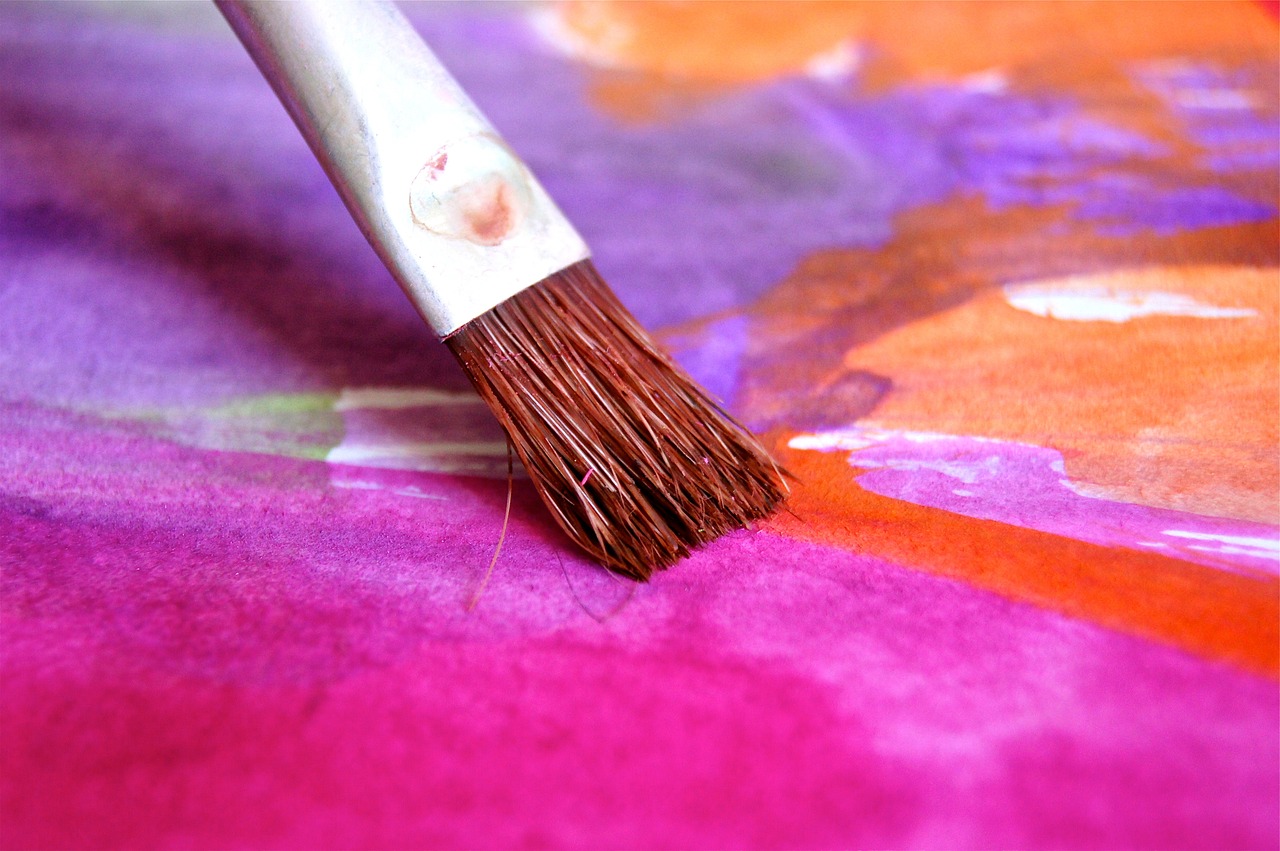
Easy Crafts for Young Children
When it comes to homeschooling, integrating art into your curriculum can be both fun and educational, especially for young children. These little ones are naturally curious and love to explore their creativity through hands-on activities. Crafting not only allows them to express themselves but also helps in developing essential skills like fine motor skills and hand-eye coordination. So, what are some easy crafts that can keep your little ones engaged while learning? Let’s dive into a world of creativity!
One simple yet delightful craft is creating paper plate animals. Using just paper plates, scissors, and some colorful markers, children can transform a plain plate into their favorite animal. For instance, they can cut out ears and add googly eyes to make a cat or draw a beak and feathers for a bird. This activity encourages imaginative play and storytelling, as children can create a narrative around their animal creations. Plus, it’s a fantastic way to recycle materials!
Another engaging project is DIY nature collages. Take a nature walk with your kids and collect leaves, twigs, and flowers. Once you’re back home, provide them with a piece of cardboard or thick paper and some glue. Encourage them to arrange their natural finds into beautiful patterns or shapes. This not only fosters creativity but also teaches them about the environment. They’ll learn to appreciate the beauty of nature while having a blast creating their very own masterpiece!
For some sensory fun, how about making homemade playdough? This is a super easy recipe that requires just a few ingredients: flour, salt, water, and cream of tartar. Mix these in a pot over low heat until it forms a dough. Once cooled, children can mold and shape the playdough into anything they can imagine. You can even add food coloring or essential oils for extra sensory stimulation. This activity is fantastic for enhancing fine motor skills as they roll, pinch, and shape their creations!
Don’t forget about the classic finger painting! Set up a space with some washable paints and large sheets of paper. Let your children use their fingers to create whatever they desire. This not only allows them to express their emotions through color but also gives them a chance to explore textures and the joy of getting messy! Just be sure to have some old clothes on hand because things might get a little colorful!
Lastly, consider making friendship bracelets using colorful yarn or beads. This craft is particularly great for older preschoolers who are starting to develop better dexterity. They can create patterns and designs, which not only enhances their creativity but also teaches them about colors and shapes. Plus, they’ll love gifting these bracelets to their friends or family members, promoting sharing and kindness!
In conclusion, easy crafts for young children can be a gateway to learning and creativity. These activities not only keep kids entertained but also help them develop essential skills that will benefit them in their educational journey. So gather your supplies and let the crafting begin!
- What age is appropriate for these crafts?
Most of these crafts are suitable for children aged 3 to 7 years, but supervision is always recommended. - Do I need special supplies for these crafts?
No, most of the materials are common household items or easily accessible art supplies. - How long do these activities typically take?
Each craft can take anywhere from 30 minutes to a couple of hours, depending on the child's engagement and complexity of the project. - Can these crafts be adapted for older children?
Absolutely! You can add more complex elements or techniques to challenge older kids.

Seasonal Crafts to Celebrate Holidays
Celebrating holidays with crafts is like adding sprinkles to a cupcake—it's the fun and colorful touch that makes everything better! Seasonal crafts not only bring joy and creativity into your home but also serve as a wonderful opportunity to teach your children about various cultural traditions. Imagine the excitement on your child's face as they create a festive decoration that reflects the spirit of the season! From Halloween to Christmas, and everything in between, there are countless projects that can transform your home into a gallery of holiday cheer.
For instance, during Halloween, why not make spooky decorations like ghostly garlands or pumpkin lanterns? These crafts can be made using simple materials like construction paper, scissors, and glue. You can even venture outdoors to collect leaves and twigs to create natural decorations. This not only encourages creativity but also enhances their fine motor skills as they cut and assemble their projects. Plus, it’s a great way to bond with your little ones as you share stories about Halloween traditions around the world.
As the holiday season approaches, Christmas crafts can light up your home with warmth and joy. Consider making homemade ornaments together! Using clear plastic baubles, you can fill them with glitter, fake snow, or even tiny photos to create personalized decorations. This activity not only fosters creativity but also gives children a sense of accomplishment as they see their handiwork hanging on the tree. Another fun idea is to create handmade cards for family and friends, allowing your kids to express their thoughts and feelings while practicing their writing skills.
Don't forget about Thanksgiving, a perfect time to create crafts that reflect gratitude and togetherness. A fun activity could be making a “Thankful Tree,” where each family member writes what they are thankful for on colorful leaves and attaches them to a branch. This craft not only beautifies your home but also opens up meaningful conversations about appreciation and family values. It’s a beautiful way to teach children the importance of gratitude while engaging them in a fun, hands-on project.
Even Valentine's Day can be celebrated with crafts that spread love and friendship. Children can create heart-shaped cards or decorations using various materials like felt, paper, and stickers. This is an excellent opportunity for them to learn about kindness and compassion, as they can make cards for friends, family, or even local nursing homes. By sharing their creations, they not only showcase their artistic skills but also spread joy to others.
Incorporating seasonal crafts into your homeschooling routine is not just about the final product; it’s about the entire experience. Each project becomes a memorable moment filled with laughter, learning, and creativity. So, gather your art supplies, let your imagination run wild, and create beautiful memories with your children as you celebrate each holiday together!
- What materials are best for seasonal crafts? Common materials include construction paper, scissors, glue, markers, and natural items like leaves and twigs.
- How can I make seasonal crafts educational? Incorporate lessons about the holiday's history or traditions while crafting to enhance learning.
- Are there crafts suitable for all age groups? Yes! Choose projects that can be adapted to different skill levels, ensuring everyone can participate.
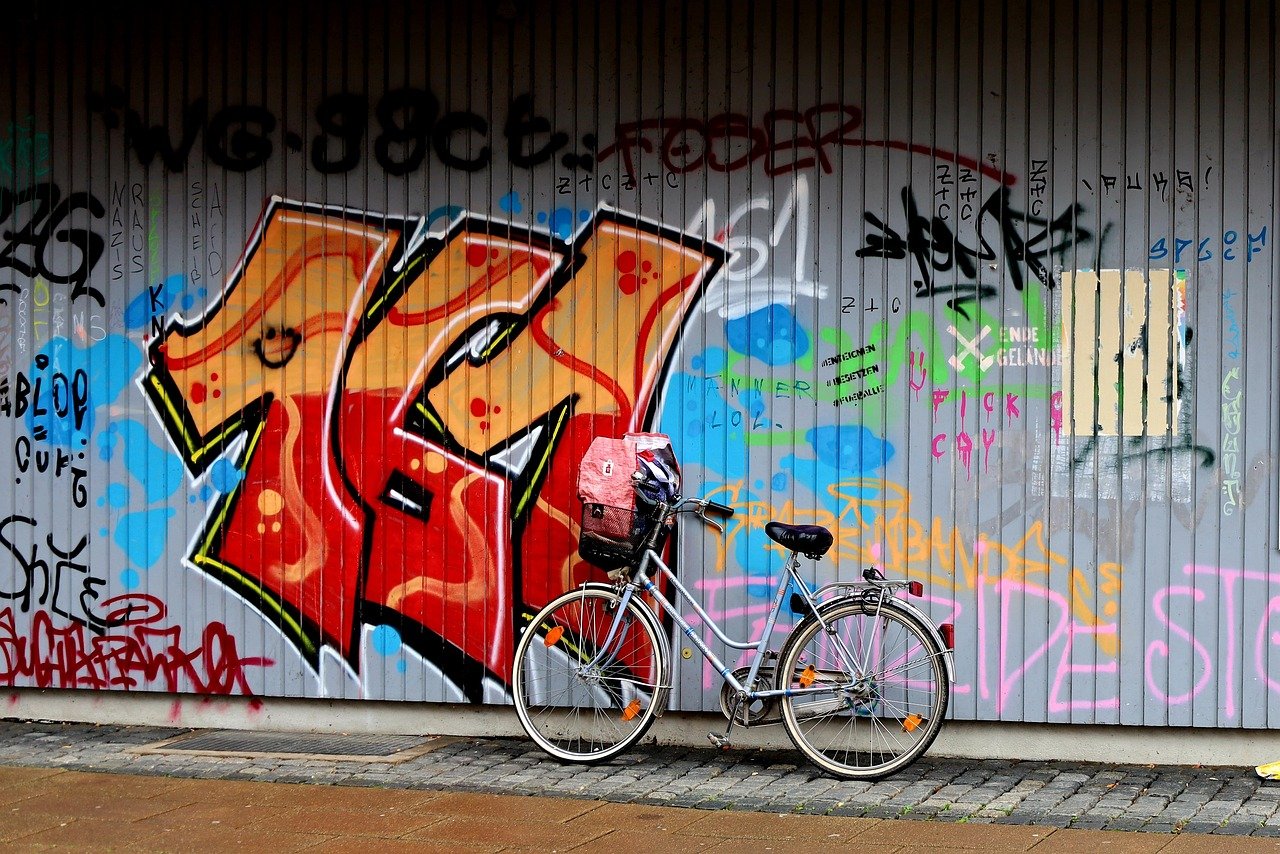
Incorporating Nature into Art Projects
When it comes to art, nature is the ultimate canvas. Imagine your children stepping outside, surrounded by the vibrant colors, textures, and sounds of the great outdoors. Incorporating nature into art projects not only stimulates creativity but also fosters a deeper appreciation for the environment. By blending art with the natural world, kids can learn about ecosystems while expressing themselves artistically. This approach encourages them to observe details that might otherwise go unnoticed, like the intricate patterns on a leaf or the varying shades of a sunset.
One fantastic way to get started is by organizing a nature scavenger hunt. Equip your little artists with a list of items to find, such as different types of leaves, flowers, stones, and twigs. Once they've gathered their treasures, they can use them to create stunning art pieces. For example, leaves can be used for impressions or prints, while twigs can be arranged to form the framework of a sculpture. This hands-on experience not only enhances their fine motor skills but also provides a wonderful opportunity for sensory exploration.
Another engaging project is to create nature collages. After collecting items from your scavenger hunt, children can glue their finds onto a piece of cardboard or canvas, creating a unique piece of art that reflects their personal experience with nature. Encourage them to arrange the items in patterns or shapes, allowing their imagination to run wild. This activity is perfect for teaching kids about colors, shapes, and textures while also promoting creativity.
Don't forget about the power of painting with natural materials. Kids can create their own paints using items found in nature. For example, they can mash berries to create vibrant colors or use dirt to make earthy tones. This not only teaches them about color mixing but also about the different ways to create art. Imagine the joy on their faces as they realize that the world around them can be transformed into their artistic tools!
Lastly, consider organizing a nature-themed art exhibition at home. After completing their projects, display the artworks in a designated area and invite family members to appreciate the creativity inspired by nature. This not only boosts children's confidence but also allows them to share their artistic journey with others. By showcasing their work, they learn the value of self-expression and the importance of sharing their creativity with the world.
Incorporating nature into art projects is a beautiful way to enhance your homeschooling experience. It connects children with the environment, nurtures their creativity, and encourages them to see the beauty in the world around them. So, grab those art supplies, step outside, and let the natural world inspire your next masterpiece!
- What are some easy nature art projects for kids? Simple projects include leaf rubbings, flower pressing, and nature collages.
- How can I incorporate nature into indoor art projects? Use dried flowers, leaves, and natural materials collected outside to create indoor art pieces.
- What benefits does nature-based art provide? It enhances creativity, observational skills, and a connection to the environment.

Art Techniques for Older Kids
As children grow older, their artistic abilities and interests evolve, making it essential to introduce them to more advanced art techniques that can challenge their skills and inspire creativity. Engaging older kids in art not only enhances their technical abilities but also encourages them to express their unique perspectives and emotions through various mediums. So, what are some effective techniques that can spark their interest and foster artistic growth? Let’s dive into a world of creativity!
One of the most rewarding techniques for older kids is acrylic painting. This medium is versatile and forgiving, making it perfect for those who are still finding their style. With acrylics, kids can experiment with layering, blending, and even creating texture using various tools. Imagine them creating a vibrant landscape or an abstract piece, allowing their imagination to run wild! To get started, all they need are a few basic supplies: acrylic paints, brushes of different sizes, and a canvas or thick paper. This technique not only boosts their confidence but also teaches them about color theory and composition.
Another exciting technique is watercolor painting. Unlike acrylics, watercolors require a different approach, focusing on transparency and fluidity. Older kids can learn to control water to create beautiful gradients and washes, which can be incredibly satisfying. To make this even more engaging, they can explore techniques like wet-on-wet, where they apply wet paint onto wet paper, creating soft, dreamy effects. This method encourages patience and mindfulness, allowing kids to appreciate the beauty of the process rather than just the final product.
For those interested in drawing, charcoal drawing is a fantastic technique that allows for dramatic contrasts and expressive lines. Charcoal can create deep blacks and soft grays, offering a range of values that can make a drawing come alive. Encourage older kids to experiment with
- shading techniques
- blending
- and even creating textures
Additionally, exploring digital art can open up a whole new world for older kids. With the rise of technology, many apps and software programs allow young artists to create stunning pieces using digital tools. Programs like Procreate or Adobe Fresco provide a platform for kids to experiment with drawing, painting, and even animation. The beauty of digital art is that it encourages experimentation without the fear of making mistakes, as everything can be undone with a click. This technique can also introduce them to concepts like layers, which are crucial in both digital and traditional art.
Lastly, consider incorporating mixed media art into their projects. This technique encourages kids to combine various materials—such as paper, fabric, paint, and found objects—into a single artwork. It promotes creativity and innovation, as they can think outside the box and use everyday items to create something extraordinary. For instance, they might collage magazine cutouts with painted backgrounds or add fabric textures to a canvas, resulting in a unique expression of their artistic vision.
In conclusion, introducing older kids to these various art techniques not only enhances their skills but also nurtures their creativity and self-expression. Whether they are painting with acrylics, experimenting with watercolors, or exploring digital art, each technique offers a unique avenue for exploration and growth. So, gather those supplies, unleash their creativity, and watch as they transform their artistic journey into a vibrant tapestry of imagination!
Q: What age is appropriate for introducing advanced art techniques?
A: Generally, children aged 10 and up can start exploring advanced techniques, but it ultimately depends on the individual child's interest and skill level.
Q: Do I need to invest in expensive art supplies?
A: Not necessarily! While quality supplies can enhance the experience, many affordable options work just as well for beginners. The focus should be on encouraging creativity.
Q: How can I encourage my child to express themselves through art?
A: Provide them with a variety of materials, allow them to experiment without judgment, and celebrate their creations to build their confidence.
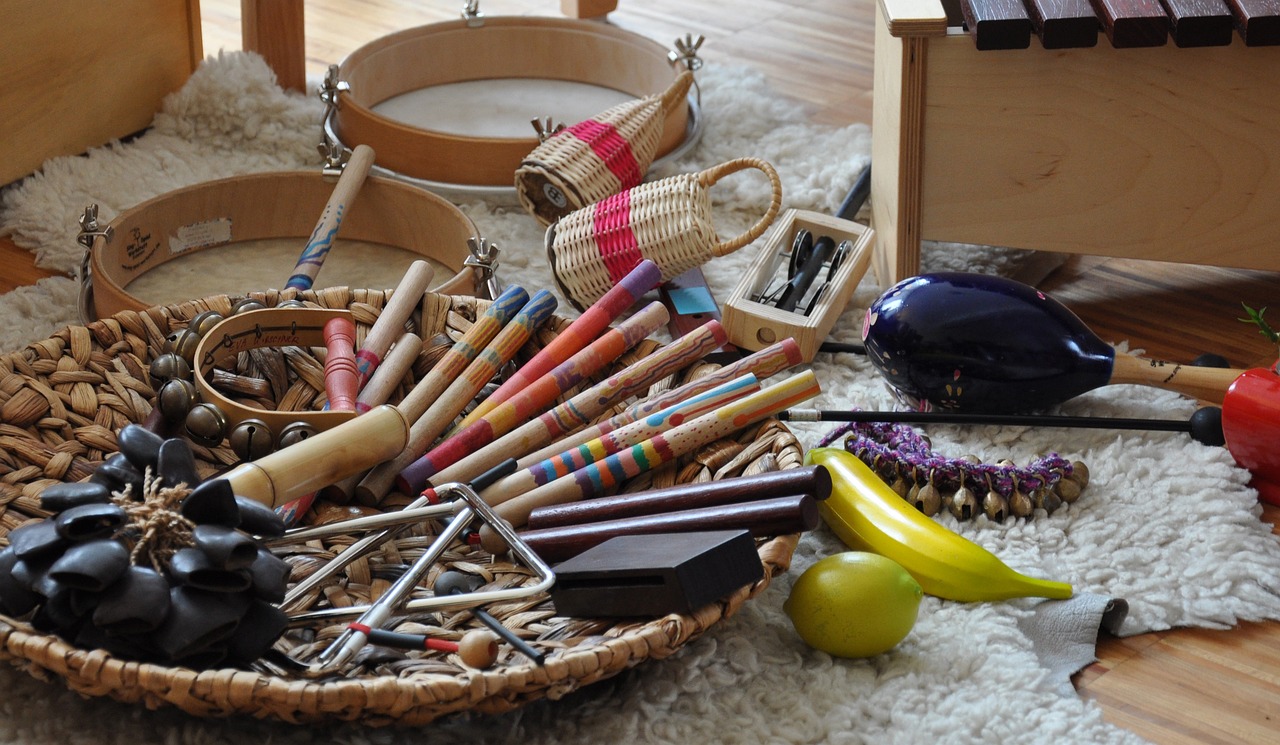
Using Technology in Art Education
In today's digital age, incorporating technology into art education has become not just an option, but a necessity. Imagine a world where your child can create stunning digital masterpieces, explore the intricacies of art history, or even collaborate with peers from across the globe—all from the comfort of your home. The integration of technology in art education opens up a treasure trove of opportunities for creativity and learning. With the right tools, children can express themselves in ways that traditional mediums may not allow.
One of the most exciting aspects of using technology in art education is the vast array of digital tools and applications available. Programs like Adobe Fresco, Procreate, and even free apps like Sketchbook provide children with the ability to draw, paint, and design using a tablet or computer. These platforms often come with features that mimic real-life art tools, such as brushes, colors, and textures, allowing young artists to experiment without the mess of traditional supplies. Not only do these tools enhance their artistic skills, but they also teach them to navigate and utilize technology effectively—a skill essential in today's world.
Moreover, technology can facilitate interactive learning experiences. For instance, virtual art galleries and museums offer children the chance to explore famous artworks from around the world without ever leaving their home. This exposure not only broadens their understanding of different art styles and cultures but also inspires their creativity. They can take virtual tours of the Louvre or the Museum of Modern Art, gaining insights into the context behind iconic pieces. This kind of engagement is invaluable, as it fosters a deeper appreciation for art and its history.
Another significant benefit of integrating technology into art education is the ability to collaborate and share work easily. Platforms like Google Classroom or even social media can be utilized to create virtual art shows, where children can display their creations and receive feedback from peers and family. This sharing process can significantly boost their confidence and self-esteem, encouraging them to take risks in their artistic endeavors. Plus, by collaborating on projects through apps like Canva or Adobe Spark, children learn the importance of teamwork and communication in the creative process.
However, it's essential to strike a balance between traditional and digital art forms. While technology offers exciting possibilities, hands-on experiences with physical materials also play a crucial role in developing fine motor skills and tactile awareness. Encouraging your child to switch between digital and traditional art can enhance their overall artistic abilities. For instance, they might sketch ideas on paper before bringing them to life digitally, merging the best of both worlds.
In conclusion, integrating technology into art education not only enriches the learning experience but also prepares children for a future where digital literacy is paramount. By leveraging digital tools, exploring virtual galleries, and promoting collaboration, you can inspire your child’s creativity and help them thrive in their artistic journey. So, why not embrace the digital age and watch your child’s imagination soar?
- What are some recommended apps for children's art education?
Some popular apps include Procreate, Adobe Fresco, and Sketchbook, which provide a variety of tools for creating digital art.
- How can technology enhance my child's creativity?
Technology offers new mediums and tools for expression, encourages experimentation, and connects children with global art communities.
- Is it important to balance digital and traditional art?
Yes, balancing both allows children to develop a range of skills and fosters a deeper understanding of artistic concepts.

Showcasing and Sharing Artworks
Sharing your child's artwork is like opening a window into their imagination; it allows them to express their feelings, thoughts, and creativity. When kids see their creations displayed, it not only boosts their confidence but also encourages them to keep exploring their artistic talents. So, how can you showcase and share these precious masterpieces? Let's dive into some exciting ideas!
One of the simplest ways to share art is by creating a dedicated art gallery at home. You can use a wall or a bulletin board to display their latest creations. Rotate the artworks regularly to keep the display fresh and exciting. This not only gives your child a sense of pride but also transforms your home into an evolving gallery of creativity. Imagine walking through your own home and being surrounded by vibrant colors and unique designs that tell a story about your child's growth!
Another fantastic way to share art is through digital platforms. In today's tech-savvy world, why not take advantage of social media or create a private blog? You can upload photos of their artwork and share them with family and friends, allowing loved ones near and far to appreciate your child's creativity. This can be particularly meaningful for relatives who might not be able to visit often. Just ensure that you maintain privacy settings if you’re sharing on public platforms.
For a more engaging experience, consider hosting an art exhibition at home. Invite family and friends over for a mini-gallery night where your child can showcase their artwork. Set up different "exhibit" areas for various projects, and let your child give a little tour explaining their inspirations and techniques. This not only makes them feel special but also helps develop their presentation skills and boosts their self-esteem.
Additionally, you can create a scrapbook or a digital portfolio of their art. This not only serves as a wonderful keepsake but also allows your child to look back at their artistic journey over the years. You might even consider turning some of their favorite pieces into printed items like calendars, greeting cards, or even framed prints that can be gifted to family members. This way, their art becomes a cherished part of family traditions and celebrations!
Lastly, don’t forget the power of community. Local libraries, community centers, or even coffee shops often have spaces where local artists can display their work. Why not inquire about showcasing your child's artwork? It’s a fantastic way to introduce them to the local art scene and inspire them to continue creating. Plus, seeing their work in a public space can be an exhilarating experience!
In conclusion, showcasing and sharing your child's artwork can significantly enhance their confidence and foster a love for creativity. Whether through home galleries, digital sharing, exhibitions, or community displays, the key is to celebrate their artistic journey. Remember, every piece of art is a step towards self-expression, and your encouragement can make all the difference!
Q: How can I encourage my child to share their artwork?
A: Start by praising their efforts and showing genuine interest in their creations. Create opportunities for them to share their work with family and friends, and consider hosting art exhibitions at home.
Q: What are some creative ways to preserve my child's artwork?
A: You can create a scrapbook, a digital portfolio, or even turn their artwork into printed items like calendars or greeting cards. These methods not only preserve their art but also make for wonderful gifts!
Q: How can I ensure my child's artwork is shared safely online?
A: Always use privacy settings on social media platforms and consider creating a private blog or a closed group where only trusted family and friends can view their artwork.
Frequently Asked Questions
- What are the benefits of incorporating art into homeschooling?
Incorporating art into homeschooling promotes critical thinking and creativity. It helps children develop cognitive skills, enhances emotional development, and encourages self-expression. Art activities can make learning more engaging and enjoyable, allowing kids to explore their imaginations while grasping important concepts.
- What essential art supplies do I need for homeschooling?
To effectively integrate art into your homeschooling, it's crucial to have a variety of essential supplies. Some must-haves include colored pencils, markers, paint, glue, scissors, and various types of paper. These materials will inspire creativity and make art projects accessible and fun for your kids.
- What are some easy crafts for young children?
Young children thrive on hands-on activities! Some easy crafts include paper plate masks, finger painting, and nature collages. These projects not only help develop fine motor skills but also encourage imaginative play, allowing kids to express themselves freely while having a blast.
- How can I incorporate seasonal crafts into our homeschooling?
Seasonal crafts are a fantastic way to celebrate holidays and teach cultural traditions! You can create holiday decorations, themed greeting cards, or even seasonal artwork that reflects the time of year. These projects engage children and help them learn about various celebrations while having fun.
- What are some nature-inspired art projects?
Nature-inspired art projects encourage children to explore their surroundings. You can create leaf rubbings, rock paintings, or flower arrangements. These activities foster a connection with the outdoors and help kids appreciate the beauty of nature while expressing their creativity.
- What art techniques can older kids learn?
Older kids can benefit from exploring more advanced art techniques. They might enjoy learning about watercolor painting, charcoal drawing, or mixed media. These methods challenge their skills and encourage artistic growth, allowing them to experiment with different styles and materials.
- How can technology enhance art education?
Technology can play a significant role in art education. There are various apps and software available that allow children to create digital art, explore design concepts, and even learn about famous artists. Integrating technology can make art more accessible and exciting, opening up new avenues for creativity.
- What are some ways to showcase and share my child's artwork?
Sharing your child's artwork can boost their confidence! Consider creating a home gallery, using social media to share their creations, or even hosting a small exhibition for family and friends. Celebrating their artistic achievements in these ways can help them feel proud and valued.



















